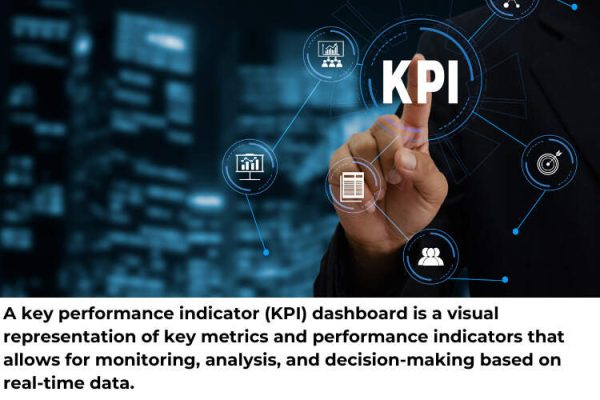
Key Performance Indicator is identification and definition of the most critical metrics and indicators that align with organizational goals and objectives accordingly
Categories may include financial, operational, customer-related, and employee-related KPIs consequently
Dashboard Design:
Layout and visualization techniques used to present KPIs in an intuitive and easy-to-understand format accordingly
Consideration of graphs, charts, tables, and other visual elements for effective communication of data.
Data Sources Key Performance Indicator
Description of the sources from which data is collected to populate the KPI dashboard.
Integration with internal systems (e.g., ERP, CRM) and external sources (e.g., market data, surveys).
Metrics Calculation
Explanation of how each KPI is calculated, including formulas and methodologies used.
Consideration of data aggregation, normalization, and any adjustments made for accuracy and consistency.
Real-Time Updates
Mechanisms for updating KPI data in real-time or at regular intervals to ensure the dashboard reflects the most current information consequently
Use of automated data feeds, APIs, or manual input processes for data updates accordingly
Performance Targets
Establishment of target values or benchmarks for each KPI to indicate desired performance levels.
Comparison of actual performance against targets to assess progress and identify areas for improvement.
Analysis and Insights Key Performance Indicator
Tools and features for analyzing KPI trends, patterns, and correlations to gain actionable insights.
Incorporation of drill-down capabilities and interactive elements for deeper exploration of data : consequently
User Access and Permissions
Management of user roles and permissions to control access to the KPI dashboard based on organizational hierarchy and confidentiality requirements accordingly
Implementation of authentication and authorization mechanisms for secure data access consequently
Actionable Reporting Key Performance Indicator
Generation of reports and alerts based on KPI thresholds or predefined conditions to notify stakeholders of significant changes or deviations accordingly
Provision of actionable recommendations and next steps to address performance issues or capitalize on opportunities accordingly
Continuous Improvement
Processes for gathering feedback from users and stakeholders to identify areas for enhancement and refinement of the KPI dashboard.
Iterative improvements based on evolving business needs, technological advancements, and user preferences accordingly